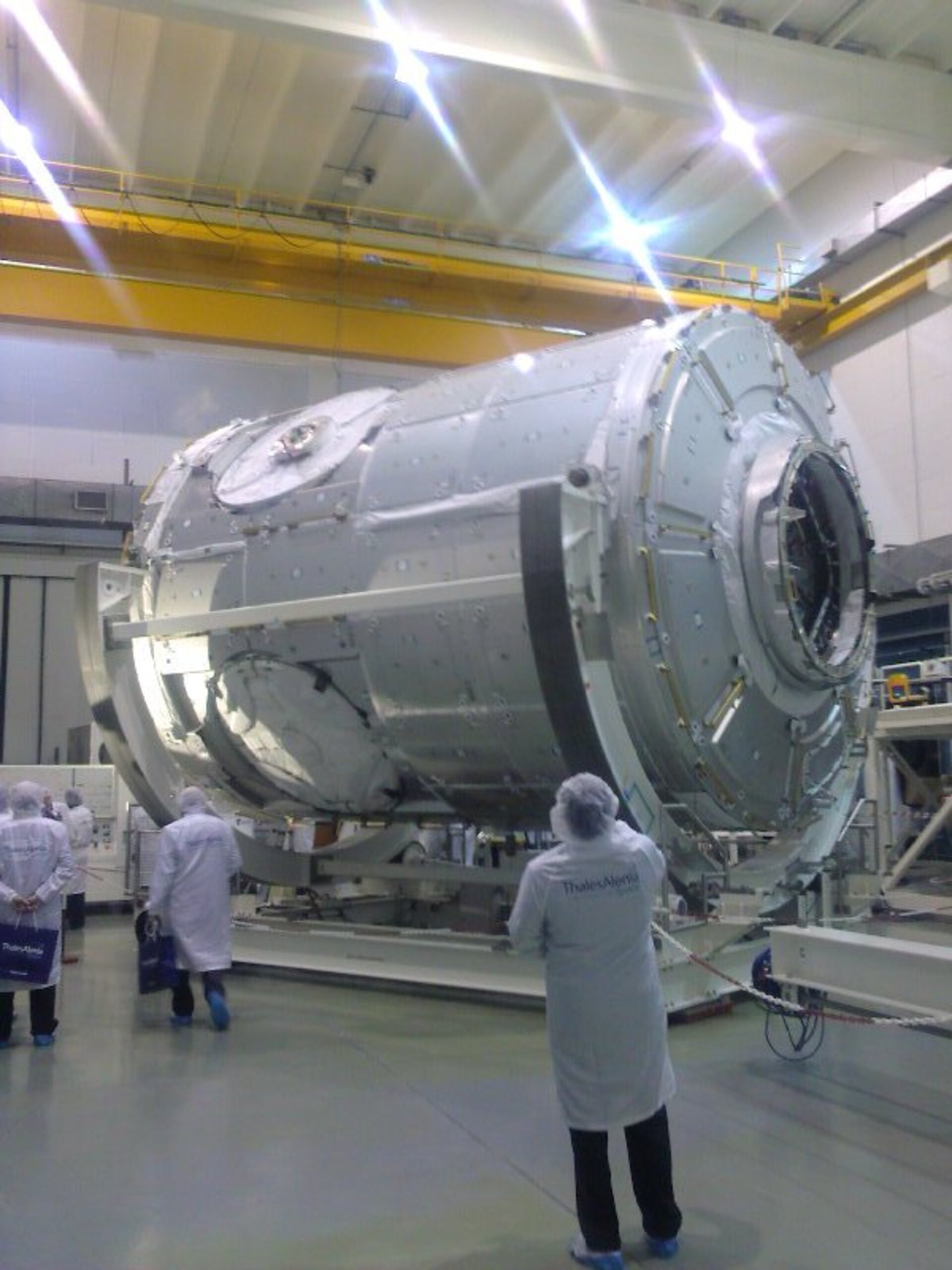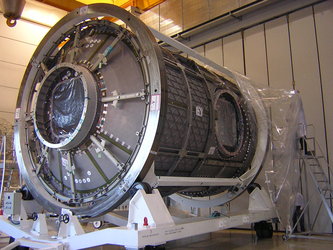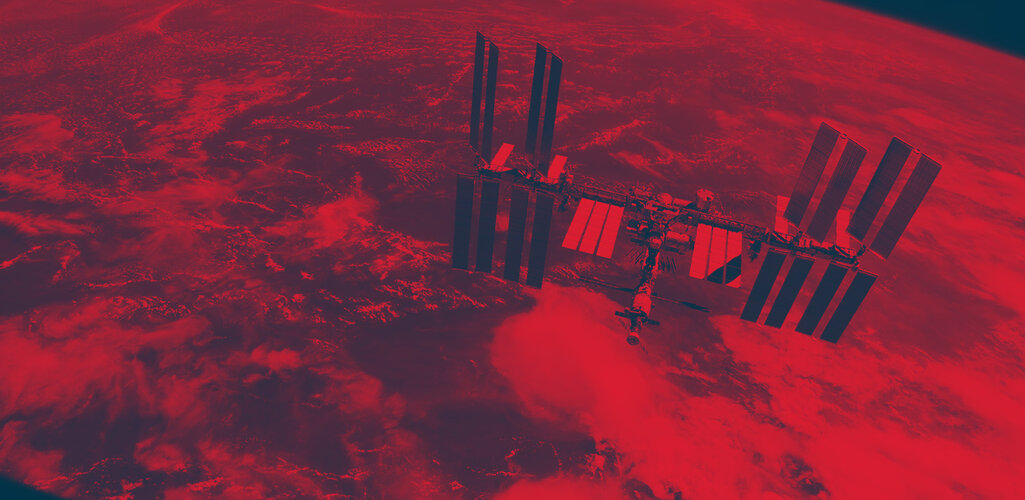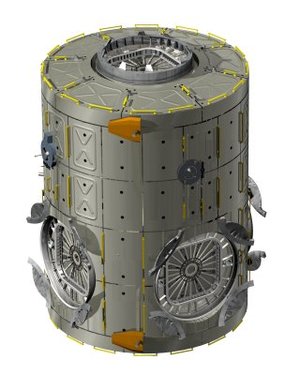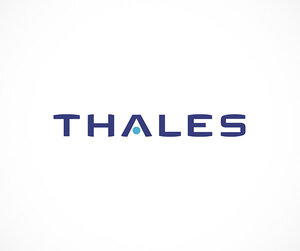European-built Node 3 says farewell to Europe
The official departure ceremony of Node 3 took place at the site of ESA’s Node 3 prime contractor Thales Alenia Space in Turin, Italy, on 16 May. The final European-built permanent module for the International Space Station is now on the way to NASA's Kennedy Space Center in Florida, US, prior to its launch early next year.
Node 3 is the last element of a barter agreement signed in Turin in 1997 by which ESA supplied NASA with International Space Station (ISS) hardware, including two Node modules (Node 2 and 3). In return, NASA ferried the European Columbus laboratory to the ISS in February 2008.
Node 3 has evolved over the years from a connecting module into a very complex element, able to accommodate sophisticated crew and life support equipment. It is now a much more complex element with many more capabilities than originally foreseen.
Node 3 will not only provide important functions such as life support for the ISS crew, it will also be the home of the European-built Cupola observation module with which it will launch.
Cupola allows for a 360 degrees view of the Station and Earth to monitor robotics operations and to observe our home planet. Together with the Cupola, Node 3 will provide an unprecedented capability for the ISS, and both modules will help in the efficient exploitation of ISS operations and provide the accommodation for facilities intended to improve the well-being of the crew.

At the farewell ceremony, speeches were provided by ESA’s Director of Human Spaceflight, Simonetta Di Pippo, NASA’s ISS Programme Manager, Mike Suffredini, and Italian Space Agency Director of Earth Observation, Rudolfo Guzzi, following initial welcome speeches by President and CEO of Thales Alenia Space Italy, Luigi Pasquali, Senator in the Italian Parliament, Enzo Ghigo, and by Assessore Sergio Conti from the Piedmont Region.
Node 3 has been named 'Tranquility' after the Sea of Tranquility, the lunar landing site of Apollo 11 in 1969, highlighting the link between the ISS, exploration and the Moon. Node 3 will connect to the port side of the Unity Node once on orbit and provide room for eight refrigerator-sized racks, two of the locations being used for the avionics racks controlling Node 3.
It will house many of the Station's Environmental Control and Life Support Systems (ECLSS), including an air revitalisation system, an oxygen generator system, a water recycling facility, a waste and hygiene compartment and a treadmill for crew exercise, which are currently stored in various places around the Station.
“The Node 3 is the last element that completes the ISS hardware. You may believe that this is the end of something. Quite the contrary. By having accomplished the development of the ISS modules and by completing its assembly in the months to come we open a new avenue of cooperation and exploration that will take humankind back to the Moon and beyond to other destinations while continuing to exploit the enormous possibilities in low earth orbit,” said ESA Director of Human Spaceflight, Simonetta di Pippo. “Europe and Italy contributed to these accomplishments. Europe, and Italy within it, can also play an important role in the future. We have the know-how, the expertise, and the industries. It would be a pity not to fully exploit such assets - and allow them to grow even further - for future global exploration undertakings.”
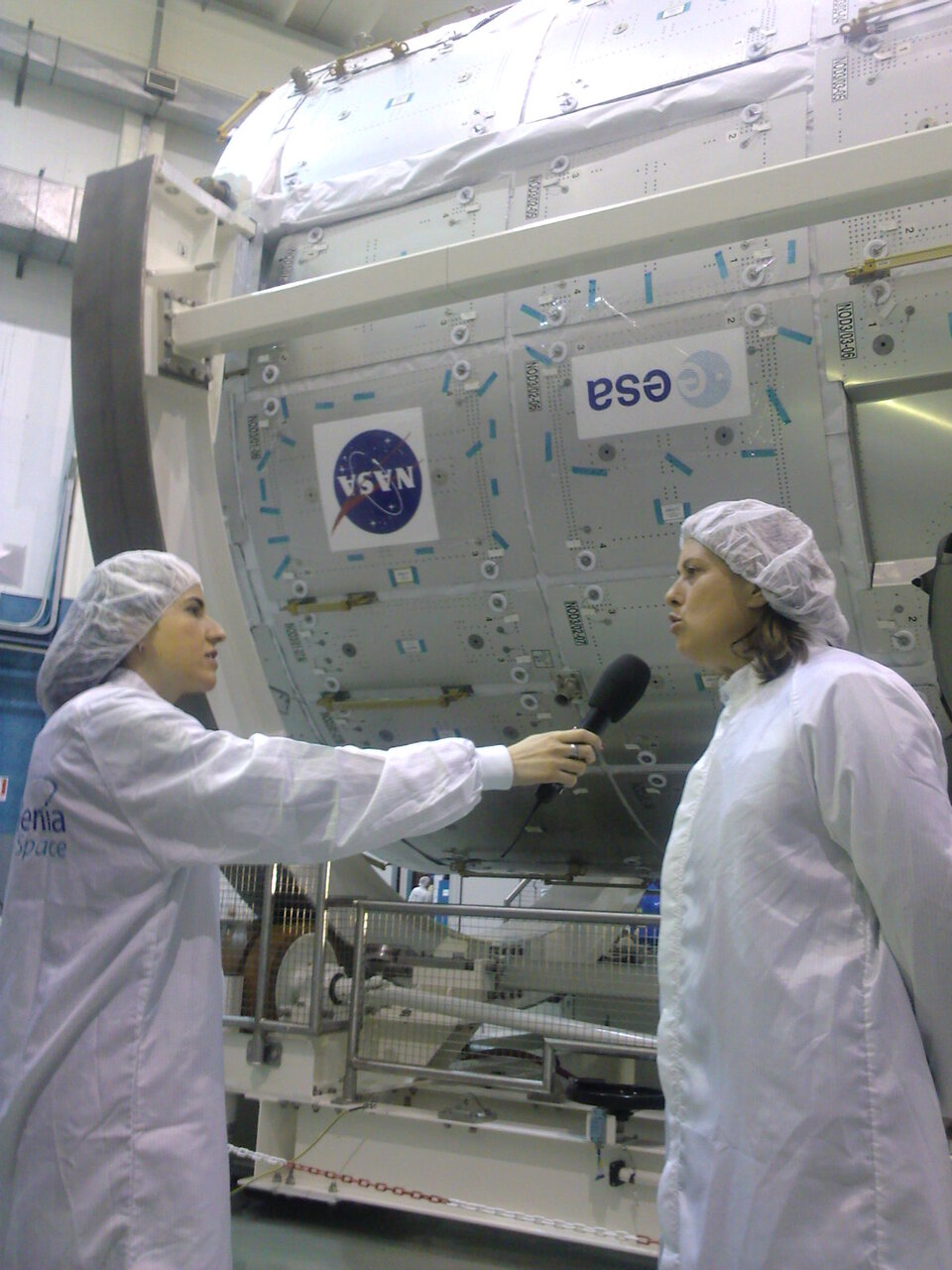
After the speeches at the farewell ceremony, a presentation of Node 3 was given by Dino Brondolo and Franco Fenoglio of Thales Alenia Space Italy. Hereafter assembled guests and media representatives transferred to the clean room at Thales Alenia Space to view Node 3 as well as the Integrated Cargo Carrier of ATV Johannes Kepler, ESA’s second Automated Transfer Vehicle (ATV), which acts as a key logistics spacecraft for the ISS. The ATV cargo carrier, Node 2 and 3 and the European Columbus laboratory all share the same structural heritage stemming from the Italian-built Multi-Purpose Logistics Modules.
“Having been involved in the ISS programme from the beginning, it is a proud moment to see the final permanent European pressurised module for the ISS about to embark on its final journey,” said ESA’s ISS Programme Manager, Bernardo Patti. “With Node 2 and Columbus already attached to the ISS and Node 3 and Cupola launching next year, Europe has provided a significant number of pressurised modules on the ISS, representing almost 60% of the US segment of the ISS. With the second ATV well on track to completion and more ATVs to come, as well as the future launch of the European Robotic Arm, Europe has built a great degree of technical, scientific and operational knowledge, which it can build on and develop to achieve its goals in the future.”
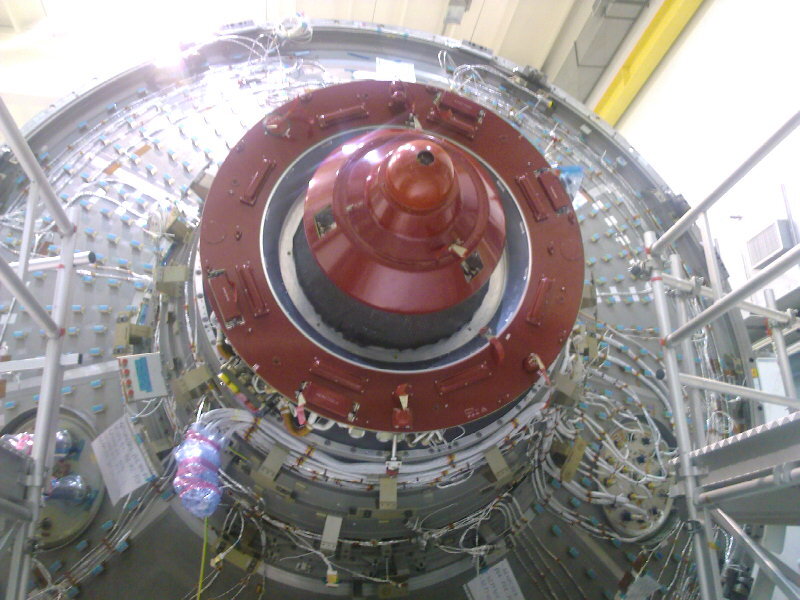
Node 3 was transported by an Airbus Beluga aircraft to NASA's Kennedy Space Center, Florida, on 17 May from Turin Airport. Once it has arrived, Thales Alenia Space will add the final touches before ownership is officially transferred to NASA at the end of October.
“At the launch site, Node 3 will undergo the final preparation for launch including the mating with the Cupola, which is already at Kennedy, and functional testing with final flight software,” said Philippe Deloo, ESA’s Project Manager for the Nodes and Cupola. “Once the ground operations are completed, Node 3 will be officially transferred to NASA for launch processing on Shuttle flight STS-130. This means that with the current launch date of February 2010, Node 3 and Cupola should be integrated into the Shuttle cargo bay by the end of this year.”


